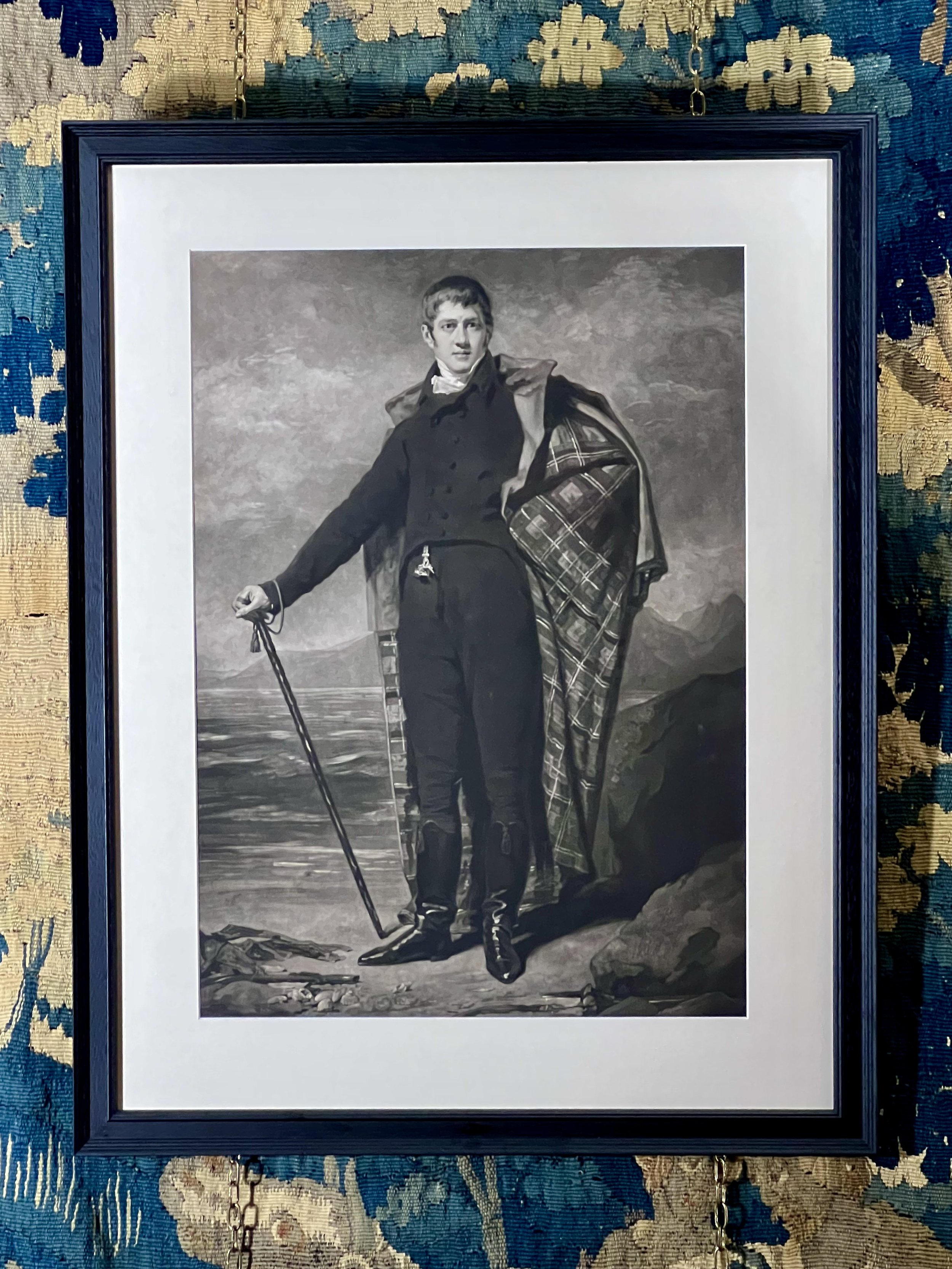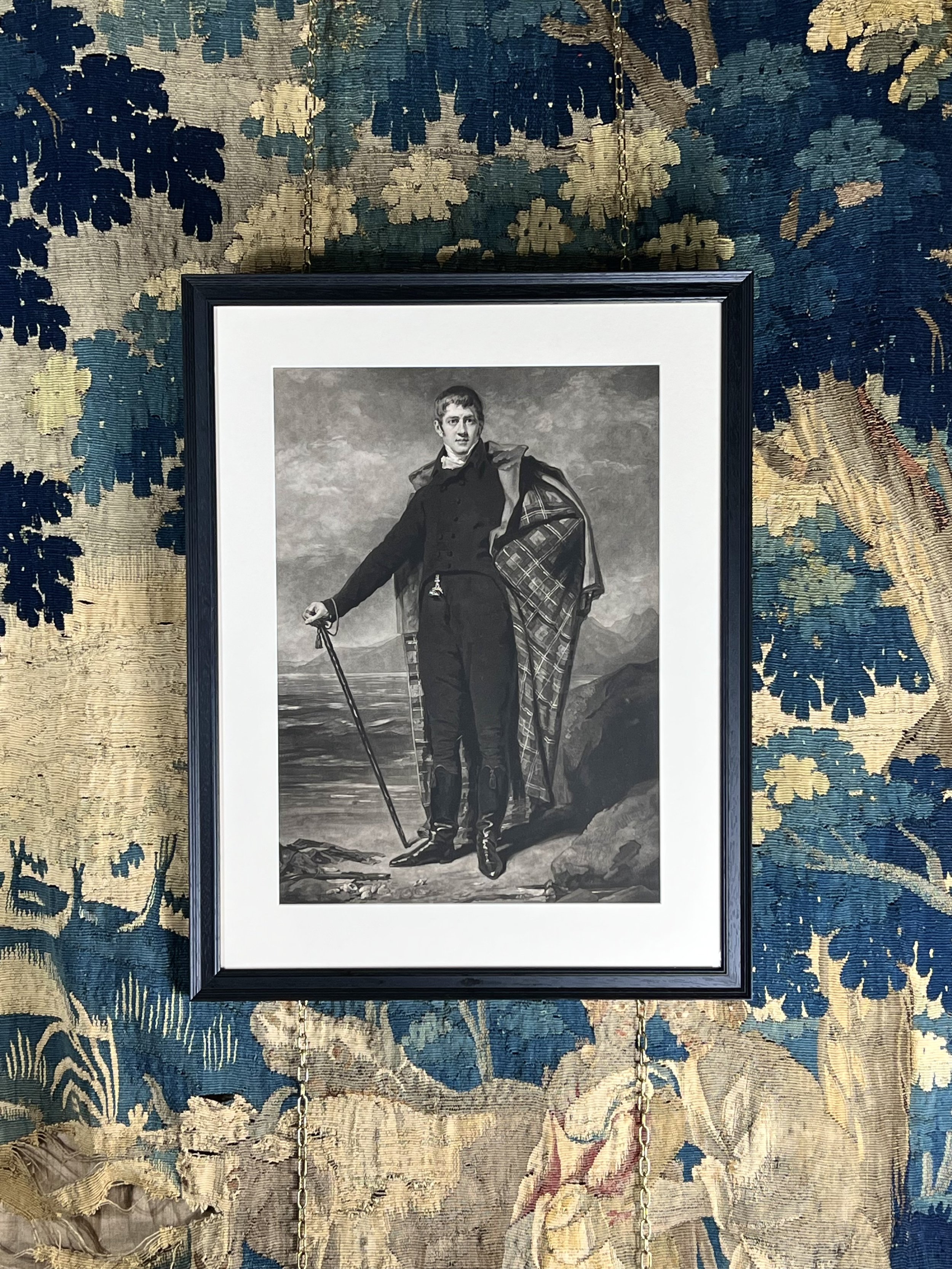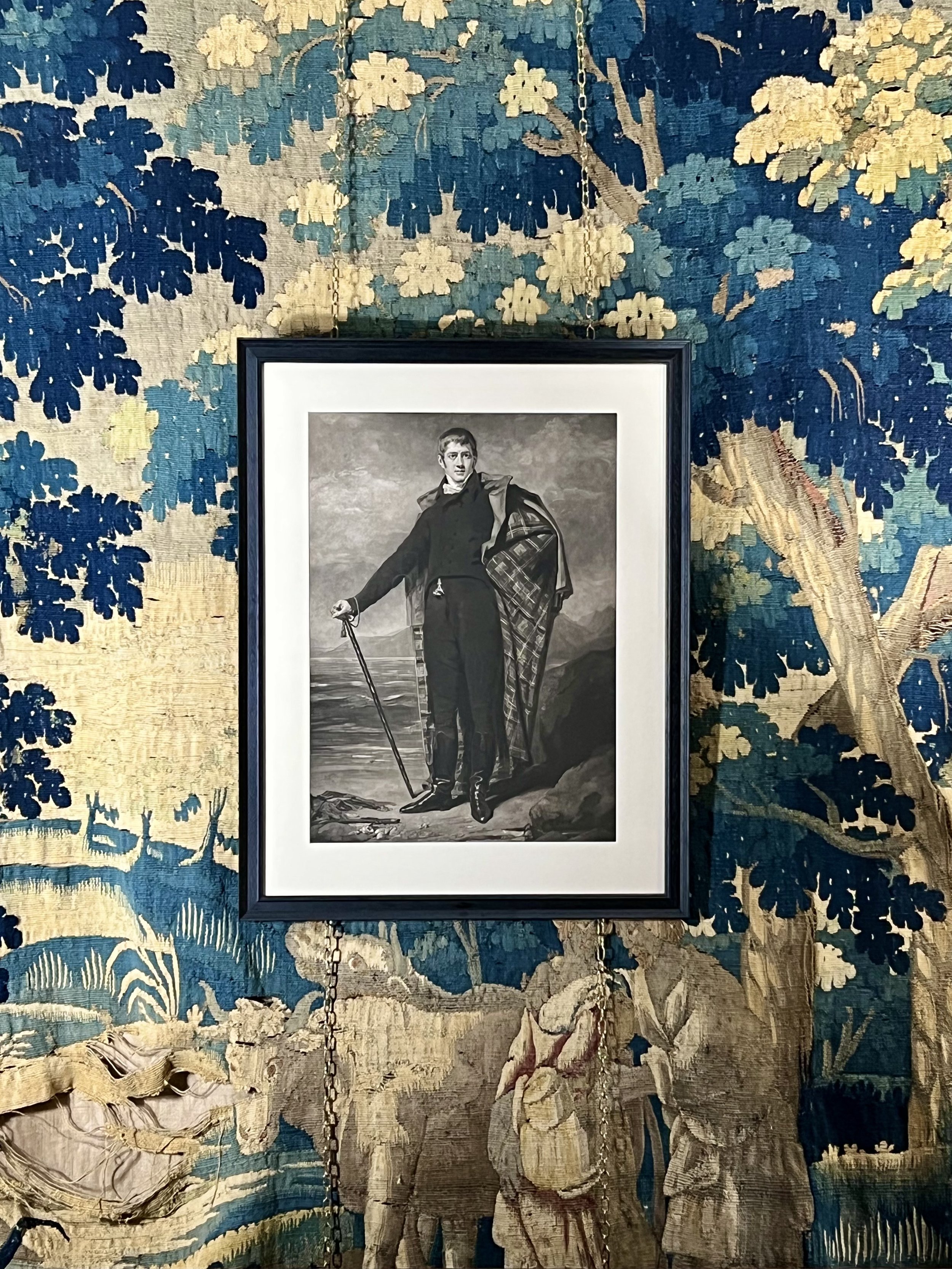



JOHN CRICHTON-STUART, 2ND MARQUESS OF BUTE - BY WILLIAM WARD AFTER SIR HENRY RAEBURN.
Fine early 19th century mezzotint portrait of John Crichton-Stuart, 2nd Marquess of Bute, KT, FRS (10 August 1793 – 18 March 1848), styled Lord Mount Stuart between 1794 and 1814.
Portrait; full-length to front facing the viewer, within an extensive landscape, his right hand upon a staff wearing a tartan lined great coat and black leather boots over his breeches.
John Crichton-Stuart, 2nd Marquess of Bute, KT, FRS (10 August 1793 – 18 March 1848), styled Lord Mount Stuart between 1794 and 1814 was a wealthy aristocrat and industrialist in Georgian and early Victorian Britain. He developed the coal and iron industries across South Wales and built the Cardiff Docks.
Bute's father, John, Lord Mount Stuart, died a few months after he was born and as a young child he was brought up first by his mother, the former Lady Elizabeth McDougall-Crichton, and later by his paternal grandfather, John Stuart, 1st Marquess of Bute. He travelled widely across Europe, before attending Cambridge University. He contracted an eye condition and remained partially sighted for the rest of his life. Having inherited large estates across Britain, he married his first wife, Lady Maria North, in 1818, and together they lived a relatively secluded life in Mount Stuart Housein Scotland, one of Bute's four seats. Bute was dour but industrious, with a flair for land management. He focused his daily routine around extensive correspondence with his estate managers, making biannual tours of his lands around the country. The couple did not conceive any children, and Maria died in 1841. Bute remarried four years later, to Lady Sophia Rawdon-Hastings, and she gave birth to Bute's only child, John, in 1847.
Bute was a member of the House of Lords and controlled the votes of several members of the House of Commons. He was a political and religious conservative, a follower of the Duke of Wellington, but rarely took part in national debates unless his own commercial interests were involved. Early on, Bute realised the vast wealth that lay in the South Wales coalfields and set about commercially exploiting them through local ironmasters and ing. He constructed the Cardiff Docks, a major project which, despite running heavily over budget, enabled further exports of iron and coal and magnified the value of his lands in Glamorganshire. When violence broke out in the Merthyr Rising of 1831, Bute led the government response from Cardiff Castle, despatching military forces, deploying spies and keeping Whitehall informed throughout. The contemporary press praised the marquess as "the creator of modern Cardiff", and on his death he left vast wealth to his son.
Higher resolution images on request.
Worldwide shipping available.
Mezzotint
Executed 1822
Framed size: 28.“ x 22“ / 71cm x 56cm
SOLD

